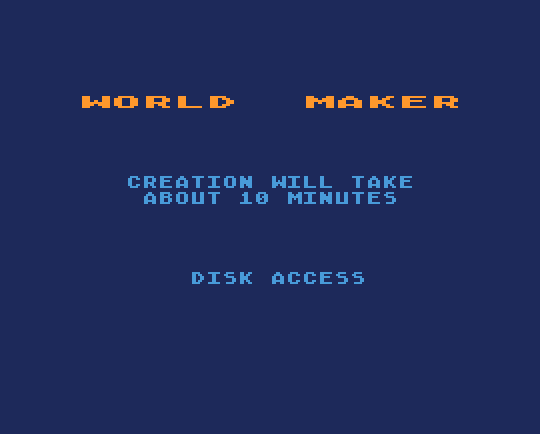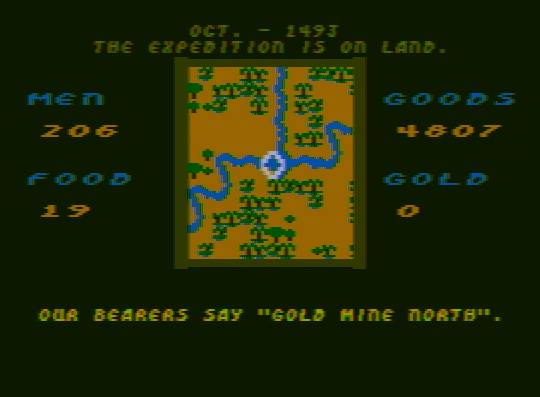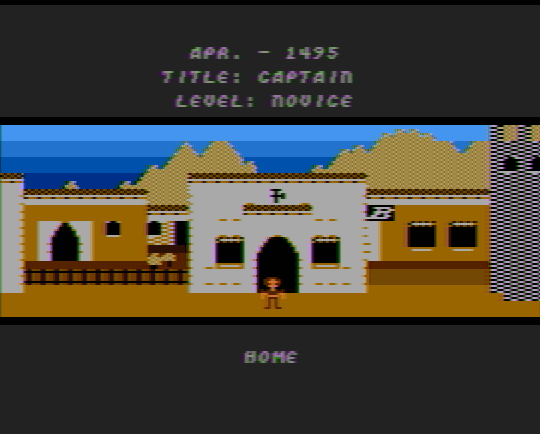


Seven Cities of Gold (1984)
Designed by the legendary Dani Bunten Berry and developed by Ozark Softscape,Seven Cities of Gold is about exploring procedural content. Oh, you could go ahead and use the real-world map, and discover everything more or less where you would expect it, but the real replayability comes when you take your tiny ships and an inadequate crew and sail off into the complete unknown.
So, in a very real sense, the game was about exploring the contours of the map generator itself. There was a logic to it; a way to start to predict what the generator would place where. Your first voyage, you were just looking for land, any land: you’d learn that just sailing west might not work if the generator had left a water-passage open. Then you found land: maybe an island, like Columbus, or maybe the mainland. Eventually, you’d start to piece together patterns: Aztec villages are more likely to be found here, gold mines over there, perhaps there’s a capital city down this river? That place over there looks like there might be a special landmark nearby, and if you’re right you get the fame of being its discoverer.
And that discovery was unique to you: no one else had ever seen that particular hemisphere before. Many other games of this era (including Elite and Starflight) had larger procedurally generated worlds. But they used a fixed seed to create the same world each time, whereas Seven Cities of Gold used the a different map each time and used the emergent relationships between the tiles that the generator arranged to create its gameplay.
